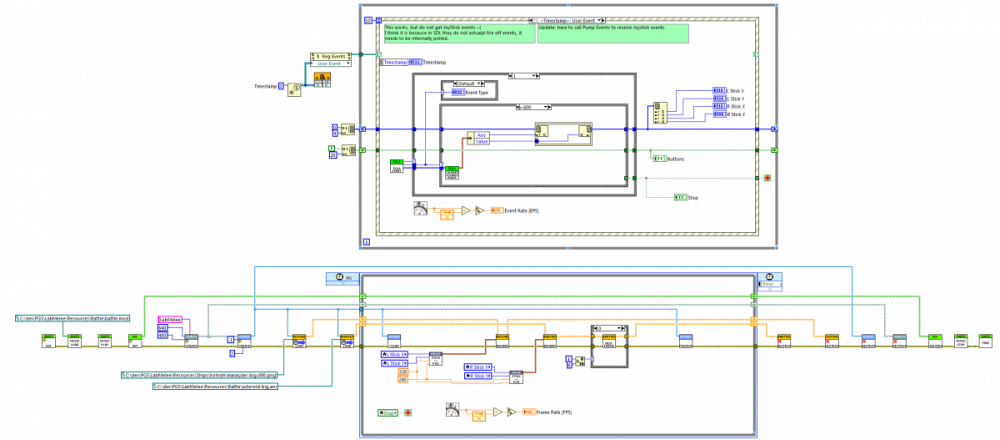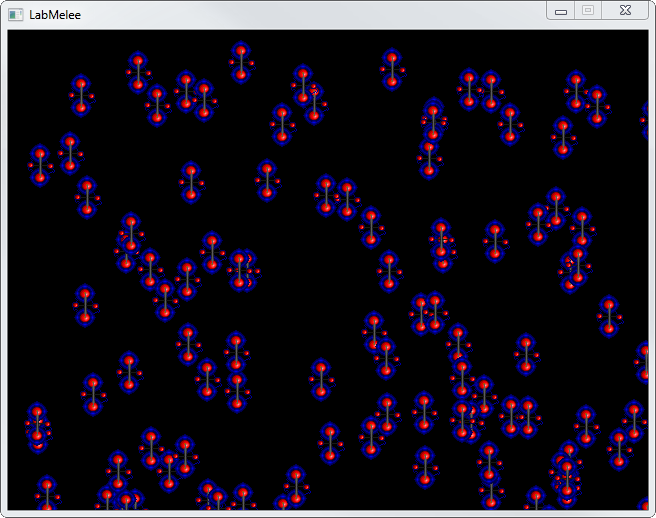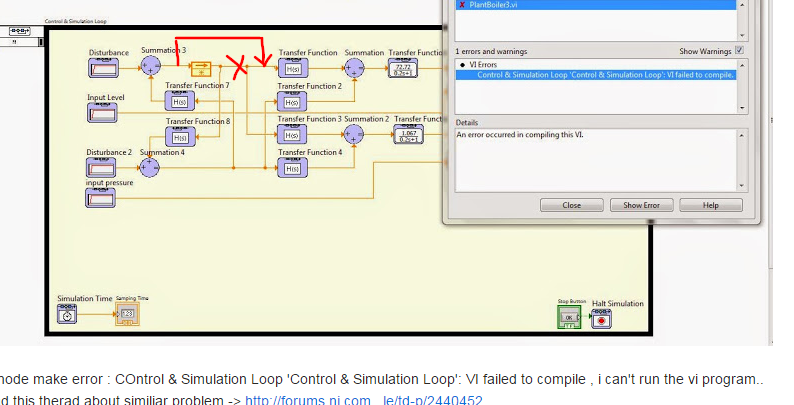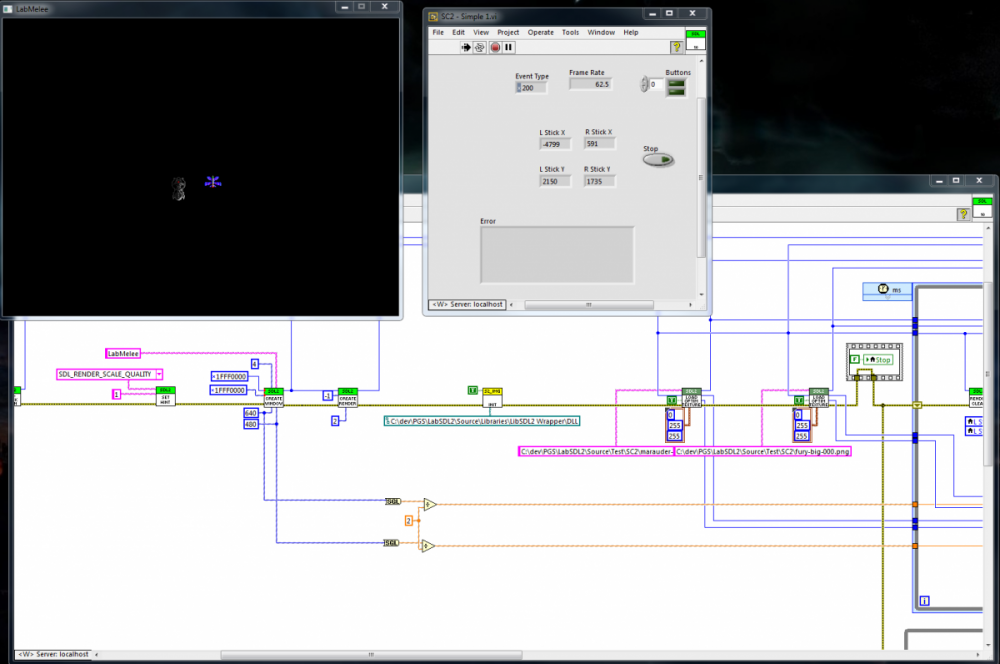-
Posts
1,198 -
Joined
-
Last visited
-
Days Won
112
Content Type
Profiles
Forums
Downloads
Gallery
Everything posted by Neil Pate
-
.MOD for true authenticity :-) BASSMOD does all the hard work, I have just wrapped the DLL.
-
Now with battle music and events posted to an Event Structure directly from within SDL (yay no more polling!), and the initial introduction of some helper classes to wrap the SDL pointers etc. http://screencast.com/t/gJVSNrtrpyCY
-
Those outcomes are possibilities, not guarantees. Not every application has 8000 VIs, and in a lot of situations the careful use of libraries can be really beneficial. I am not ready to give up on them yet.
-
Massive no from me on LLBs. I do not need to distribute my code like that, so really have no purpose for them. As others have pointed out, no namespacing, no access scope makes these a stale technology (for my situation at least) in LabVIEW. I still do use libraries though (and classes of course, which are also libraries), even with all the pain associated with the loading the entire contents etc. It troubles me too much me to have to manually namespace every VI, so I am not sure I will move away from libraries or some form of them any time soon.
-
OK, so the Slylandro now has some food :-) This is just a silly video of me controlling both the ship and the asteroid (now with animation) with an xbox controller. http://screencast.com/t/Z2s6ZDvFae The jing video messes up the frame-rate, it is buttery smooth without the video being recorded. Next step: battle music!
-
I loved the bit of risk associated with the chance that you could accidently teleport into the planet
-
Pesky indeed! My favourite was the Utwig, although the Vux could be deadly (and terribly annoying) in the right hands.
-
-
Yes I would really like to get OpenGL working as part of a library. I have some stuff already, but its old-school OpenGL and very dusty!
-
I know very little about the Simulation toolkit, or what you are trying to model, but looking at your diagram have you not perhaps put the feedback node in the wrong place? Do you really want the output from Summation 3 to be delayed before passing it into your Transfer Function? Try putting the feedback node only in the path back to Transfer Function 8.
-
Most definitely. It is so great that SC2 is effectively open source like that, I wish lots more old games were. Even the resources like .pngs etc are GPL I think.
-
Thanks, No, I also just saw the youtube video last week, complete coincidence. My (probably very unrealistic) initial goal is actually to recreate SC2 melee in LabVIEW. A secondary goal for later is to get OpenGL working nicely with LabVIEW and SDL. I have started this bit several times and never really got enough momentum to keep development up.
-
-
Million-to-one chances...crop up nine times out of ten(especially on a Friday)
-
You are right, but this is probably less true on FPGA. As there is no data-flow dependency on this I would be very surprised if it did not reliably get cleared at the start of each iteration of the acquisition loop. Defensive programming techniques are my preference so I would probably introduce some fake data-flow dependency to clear it at the start of each iteration.
-
The rules of data-flow are still valid, the value of the Triggered indicator is taken from the tunnel going into your for loop, so will have the same value for every iteration of the loop as it is really only "sampled" once on the very first iteration of the loop. One thing to add, perhaps put in a control in the path of the Timed Out? feedback node to allow you to reset the timed-out latch, this can be useful during development.
-
Well, as acceleration is just the second derivative of position surely you just double integrate the acceleration. (I jest...) I think it will be very difficult to infer any kind of accurate absolute position and velocity in 3D space with the measurements you have available, especially on a rocket! As some of the other links show, a Kalman filter type approach may be a good starting point, but I still think this is a very tricky proposition given the speeds your rocket is likely to be travelling at. Can you not add a simple GPS device to your rocket?
-
Do zombies even live for 11 years?
-
I think the standard recommendation of not doing too much processing in the event structure applies if you are also using it to handle GUI events. Are you doing this in your code?
-
I am a member of the IEEE, and have been since I was a student (so about 18 years in total). But honestly I do not really get much from it, other than a magazine each month which occasionally have some interesting articles.
-
I think it can be done, but rather than doing a Reg Event, just replace the actual cluster element. Note: this is quite old code I wrote some time ago when I was just learning about User Events (LV 8.5), I am not sure I would do things like this now if I had to!
-

VISA write (read) to USB instruments in parallel crashes LabVIEW
Neil Pate replied to ThomasGutzler's topic in Hardware
Tom, I have seen lots of instability in the past when doing parallel VISA reads. Admittedly these were using USB<-->232 converters and I always laid the blame on flaky USB converters.








